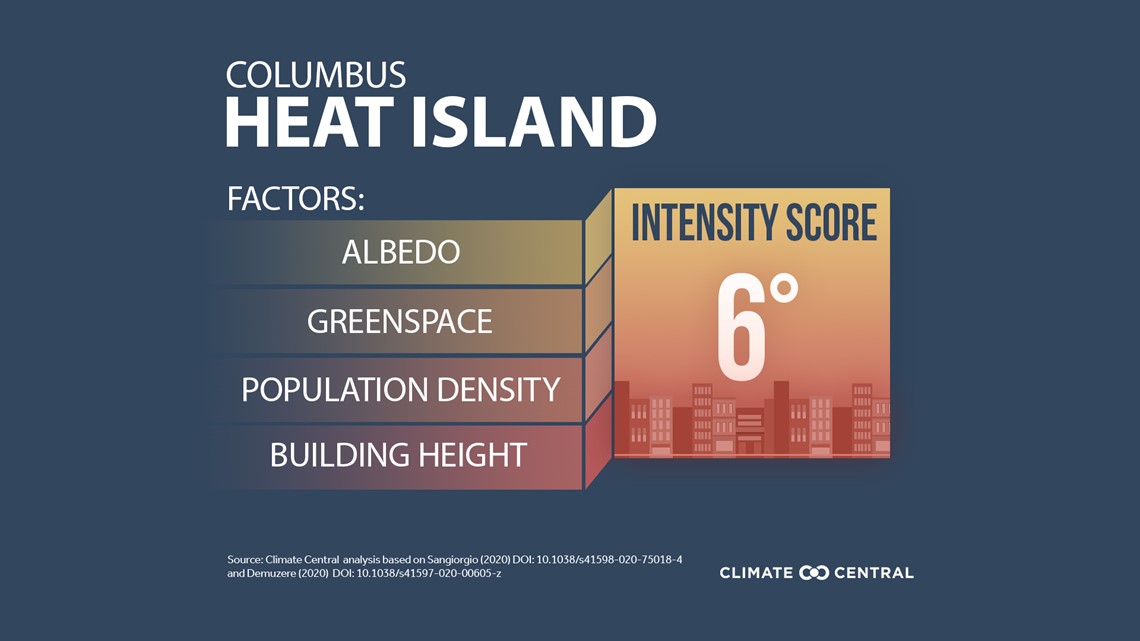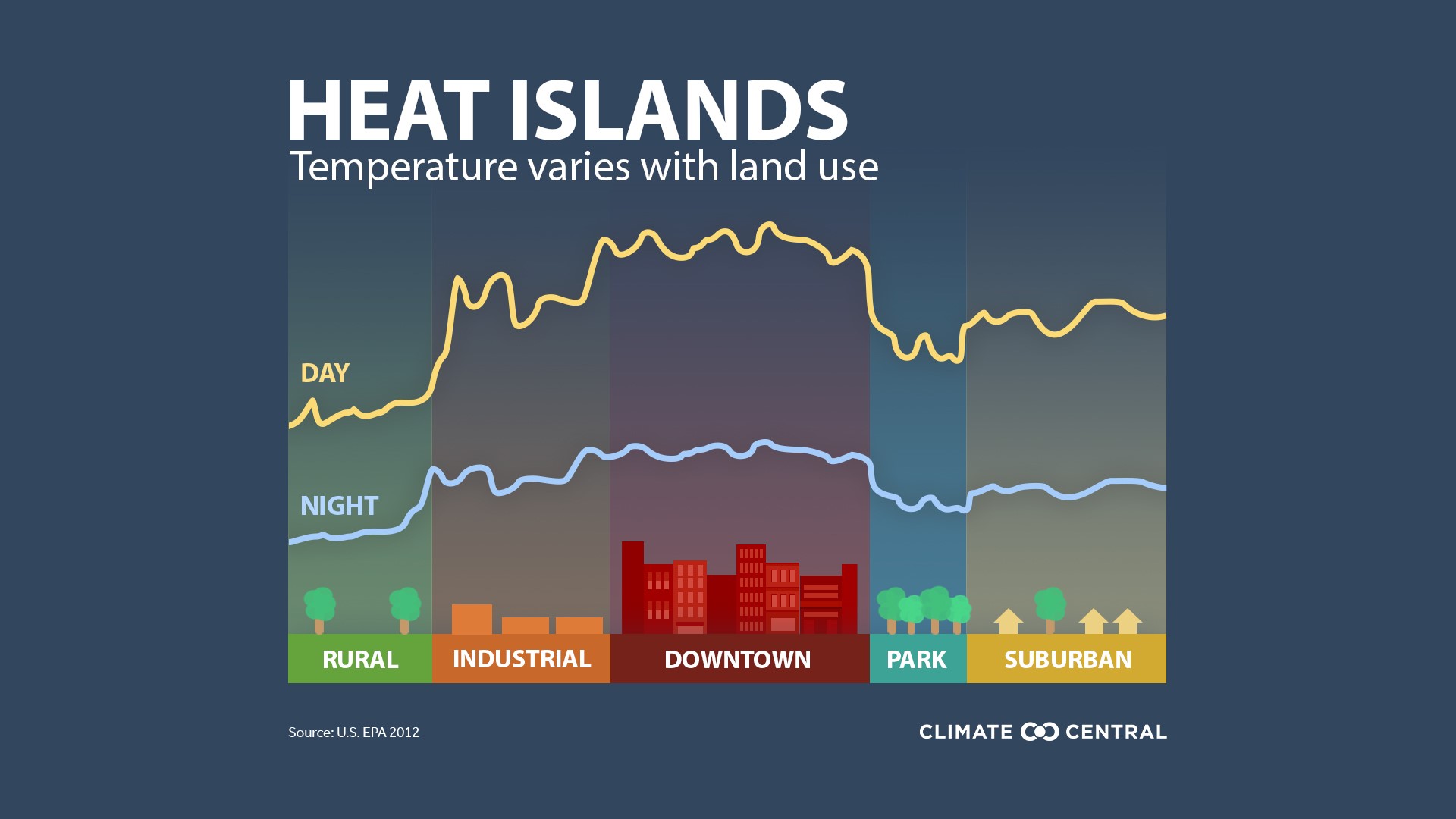Columbus, Ohio--
What is an Urban Heat Island? Chances are you live by one or you live in one!
Urban Heat Island are are metropolitan areas that are hotter than their outlying regions, with the impacts felt most during summer months. About 85% of the U.S. population lives in metropolitan areas. Neighborhoods in a highly-developed city can experience peak temperatures that are 15°F to 20°F hotter than nearby areas with more trees and less pavement.


Urban heat can be a public threat during extreme heat. It not only increases the heat more but there is a drastic increase in air pollution, which creates dangerous conditions for people working outside or living without air conditioning.
Heat islands vary from city to city, but the impacts on different land use are very clear.


Climate Central released an article that highlighted the top urban heat islands in the United States with what they call their "Heat Island Intensity Score".


Columbus scored 6 degrees on the intensity score, which is a temperature representing the potential difference in average temperature compared to less developed surroundings.
In Climate Central's study, the results show the index temperature score range was from less than 5 degrees to nearly 9 degrees.
It should also be noted that each score represents an average for the entire city, and certain neighborhoods or areas of a city will likely be cooler or hotter, depending on vegetation and other factors.
For example, if you live next to a park in the city you will be cooler during the day and night vs an area right down the street that lacks in vegetation.
Climate Central said that heat islands are strongly influenced by albedo, which measures whether a surface reflects sunlight or absorbs and retains the sun’s heat. Other factors include the amount of impermeable surface, such as buildings, driveways, sidewalks, roads, and parking lots. Hard, dry surfaces provide less shade and moisture than natural landscapes and contribute to higher temperatures. Other components include a lack of greenery and trees, the dimensions and heights of buildings, and heat created by human activities like running engines and air conditioners.
Per Climate Central, the cities with the five highest scores are New Orleans, Newark, N.J., New York City, Houston, and San Francisco. Cities in the Midwest and Northeast, such as New York, Newark, Boston, Chicago, Providence, Detroit and Cleveland have more compact, historically built-out environments, with taller buildings.
These factors add to the intensity of their urban heat island footprint. Cities like Houston and Fresno, Calif., scored higher due to the large percentage of impermeable surfaces that make up their city’s topography.
There are some solutions that can help both in the short-term and long-term for the warming climate we are living in.


These methods aren't a permanent fix but they can help cool the air around you while benefiting the environment and also saving you some money in the process.
You can look at Climate Central's Urban Heat Island methodology report here.

